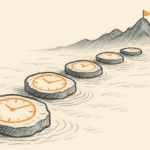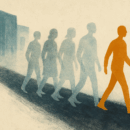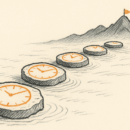Kenya must get its act together in 2005
How does a country develop? Much in the same way a successful company does. First, a few visionary men and women get together and think deeply about what they want the country to be and stand for. Then, they define the common values that hold the country together as a nation. Next, some specific, measurable targets are set for each five-year period. Strategies to achieve the targets are devised. Finally, the strategies are translated into very precise and explicit actions for all the players in the economy. And then, month by month and year by year, the actions are monitored and results are measured. With great discipline and attention to detail.
You think this cannot happen at country level? Think again. Think Malaysia. We all know that Malaysians were as poor as Kenyans in the 1960s, and are now at least 10 times richer on average. But this transformation was not the result of good fortune; it was planned and executed with a rigour that would make a chief executive envious. We need to pay attention to their story.
By 1970, Malaysians were fed up with being in the development fourth division. Poverty was fuelling ethnic divisions, and economic growth was only benefiting a few well-placed individuals. A new vision was needed for the country, and one was duly provided. It was labelled “Growth with Equity”. Pretty mundane, you might say; but this was no empty slogan. Underlying it was the realisation that development only has meaning if the majority enjoy its fruits. Social and political stability is needed for development to thrive – and this means giving the poor access to basic services and amenities, as well as to economic opportunity. So Malaysia went for growth, certainly – but it made sure that socio-economic indicators were embedded deep into its planning framework.
The vision was translated into goals and strategies, as all meaningful visions must be. These strategies have been fluid, changing over the years and in tune with the vicissitudes of global markets. Yet the themes are the same: making Malaysia “fit for business” by continuous improvement of its infrastructure and investment policies; mobilising a mix of domestic and international private capital; moving from an “input-driven” economy to a “knowledge-driven” one; and, always, focusing on initiatives to improve national integration and equity. This last strategy has a number of elements: working to eradicate “hard-core” poverty, and ensuring that neither particular races nor regions feel deprived or left out of growth.
Sounds like a plan. But if the proof of planning is in the eating of the national pudding, then Malaysians have done very well for themselves. The proportion of households living in poverty has fallen from nearly 30 per cent in 1970 to 6 or 7 per cent today. Unemployment is negligible. In the process, Malaysia has moved from a primary commodity producer to an exporter of high-value manufactured goods. Electronics and electrical machinery account for three-fifths of its exports. Today, tertiary education enrolment is nearly 30 per cent; there are 90 colour TVs per 100 households; and with 4.5 million landlines and nearly 12 million mobile connections (for a population of 23 million), the country is clearly open for business. Malaysia stopped looking like Kenya some time ago.
Two other factors are worth pointing out. First: nearly a quarter of Malaysia’s GDP is accounted for by investment; and Malaysians have always saved around a third of their national income. In short, they save and invest for the future, in good times or bad. This leads to the second interesting feature: they have a healthy mistrust of policies hatched in Washington. When the Asian economic crisis was biting deep in the late 1990s, Malaysia was able to tell the IMF to take a hike, and found its own way out of the capital crisis. Tellingly, the depression it went through was shorter and shallower than those endured by its neighbours who swallowed the Washington pill.
The Malaysian picture has not always been a rosy one. It has had its share of autocratic leadership and human rights abuses. It has felt the trauma of ethnic violence. It has been knocked down by international markets. But it has always come back fighting, because it has built a fundamental resilience over the years. We, too, have taken those punches; but we have generally stayed down for the count.
It takes some doing for a country’s economy to make no real movement for over 40 years, but here in Kenya we have managed to do just that. As the Malaysias and Koreas become world-class producers of high-end sophisticated goods, we are still stuck in the tea-coffee-horticulture-tourism paradigm – and hence always at the mercy of outsiders. What have we lacked? First and foremost, a sense of vision and purpose. Have we ever spelled out what we want to be, and then gone for it? Successive governments have given us “Uhuru na Kazi”, “the Nyayo Philosophy” and “a Working Nation”. What do these vague visions mean? How do we translate them? What are they meant to achieve, and how? Who will do what, and by when? We are never told, which tells us something about their intellectual vacuity.
The extent of our vision is to muddle along and make things marginally better for Kenyans. Even that singularly underwhelming goal has proved beyond us. What does equity mean to us? How fair do we want to be to our marginalized communities? Who exactly will deliver the economic growth (a clue: it isn’t the government) and how can we design policies and incentives to help entrepreneurs do their thing? Who is looking at our international positioning and evaluating our competitiveness?
When we set big goals, we know at the outset we are not going to achieve them. Who believed we would have water for all by 2000, and who believes we will be industrialised by 2020? Why should we believe, when there is no set of initiatives, no action plan and no work on the ground?
In 2005, it is time to stop the nonsense and start to think, plan and work systematically. Otherwise the next generation of Kenyans will still be stopping their education at age 12. They will still be exporting tea and being led by the nose by international institutions. They will still be waiting for a national highway network, and sharing half a computer between a hundred people. They will still be living in fear of robbery and rape. And they will still be poor, divided, angry and resentful. Who wants to live in that Kenya?
Development is not a chance event; it is a choice you make. It requires people of vision to come together and plan a future. It requires people of dedication to work hard in the interests of their countrymen as well as their own. It requires leaders of energy and integrity who actually want to take this country somewhere. Ultimately, it requires a populace that stands up to shout “enough!” and demands delivery of results by the holders of high office. Will you be shouting in 2005?

Buy Sunny Bindra's new book
The X in CX
here »
Popular Posts
- Where are you rushing to—your funeral?June 29, 2025
- The map will appear—once you start walking.July 6, 2025
- How to spot a real thinkerJune 15, 2025
- Built the app, forgot the flowJune 22, 2025











